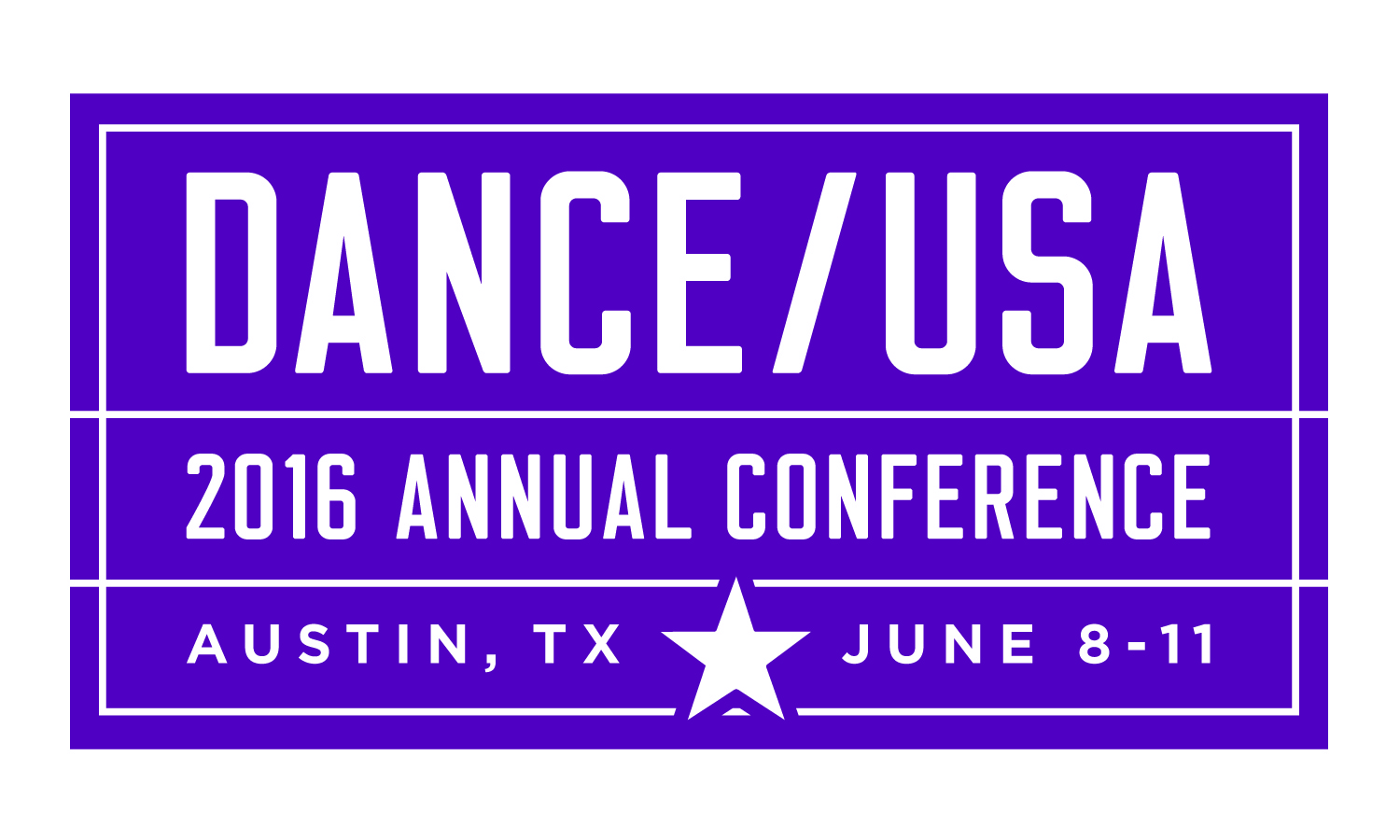AUSTIN – “How do we facilitate a more robust conversation about art?” @dusaorg
“As art practitioners, when do we need a mirror and when do we need action?” @wocaonline
“How can we expand the notion of aesthetics to be more inclusive?” @dusaorg
The 2016 Annual Conference for Dance/USA, a national service organization for American dance companies, convened in beautiful Austin, TX June 8-11. As in previous years, a great amount of attention was given to sessions discussing the effective use of technology, audience engagement, and the ever-present conversation of how to get more butts in seats.
Over the past four years, Dance/USA has been increasingly scrutinized for a lack of representation of communities of color and small-budget companies. In her opening statement, Executive Director Amy Fitterer addressed these criticisms with some exciting organizational policy changes. Dance/USA will now include organizations as part of the National Company Roster regardless of budget size or non-profit status. Previously, organizations with lower than $100K annual operating budgets were not on this list, nor were independent artists or companies with fiscal sponsorship in place of the traditional 501(c)3 tax exempt status. As a result, data research done by Dance/USA was not reflective of the dance community as a whole. “We aren’t perfect,” said Fitterer, “but we keep trying to be more equitable, more inclusive, and more diverse as an organization.”
This commitment was present in the numerous discussions and breakout sessions designed to bring attention to gaps in higher education, funding opportunities, and social justice, but as with most conferences, the whirlwind weekend in Austin can leave many participants with exhaustion, a hangover, and a big “now what?!?” looming over their heads.
The challenge of conferences is to take all the discussion, the networking, the problem solving and the provocation of thought back home with you. To integrate new practices and lines of investigation into our over-busy, regimented, “but that’s how it’s always been done” organizations is tough, and it therefore feels that, year to year, conference to conference, not much gets done.
For those of us whose job it is to communicate dance to the world at large, the spirit of this year’s Dance/USA was encouraging and motivating. Dance writing faces many of the same challenges as dance (plus more), and for this writer at least I am inspired to continue moving forward with you. Even after a month removed, the conference is something I’m still thinking about and processing. In a good way.
Mtg of powerhouse dance writers (+ me!) for a fab dinner @MAXSWineDive. thx @dancehunter @danceadvantage @4dancers! pic.twitter.com/DqnaWRyOZr
— Lauren Warnecke (@artintercepts) June 11, 2016
More than in previous years, I felt an openness and enthusiasm for change, a willingness to dialogue and learn beyond the scope of a weekend, and the motivation to keep moving forward. For as many questions as were put into the ethos, an equal number of solutions and affirmations came forward:
“Nothing is ever finished; it’s always abandoned.” @wanswonders quoting @ToasterDog
“Use dance as a way to liberate and decolonize the body” @danspaceproject quoting Fabiola Torralba
“Diversify. Make dance more visible and objective.” @PrakashMohandas
“Millennials aren’t the enemy. They’re the future. Let’s stop complaining, meet them halfway & invite them in.” @wanswonders
—
If you missed the conference, search the #DUSAconf hashtag on Twitter for some great insight and suggestions from breakout sessions and plenaries.
Note: A previous version of this article misstated that membership in Dance/USA was limited to non-profit organizations with budgets greater than $100,000. This has been corrected to indicate that inclusion in the National Company Roster, not membership, is now available to organizations under $100K or operating with fiscal sponsorship, and therefore will now be part of Dance/USA’s data collection.
